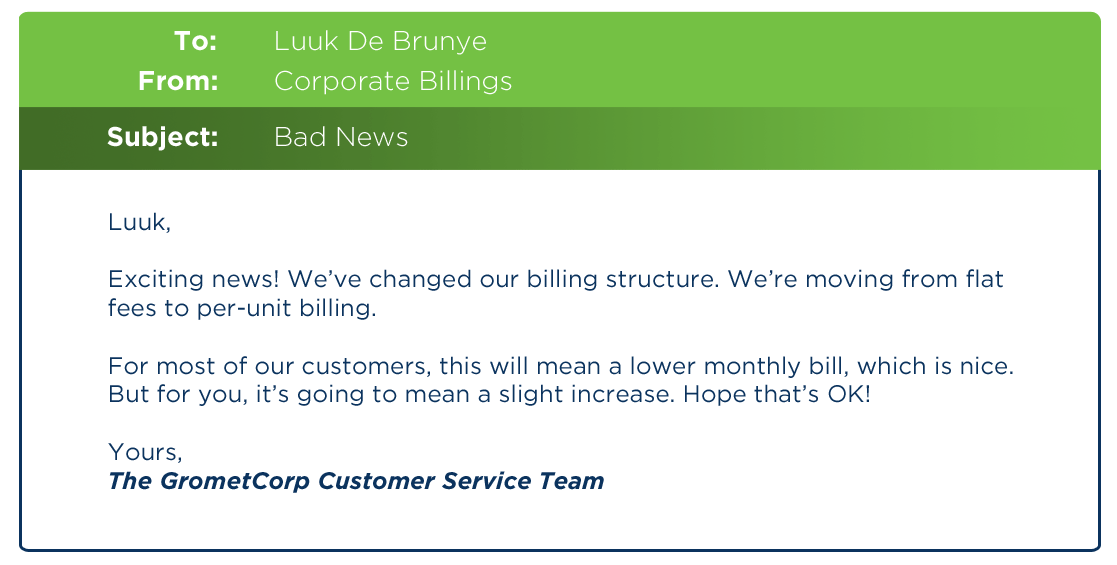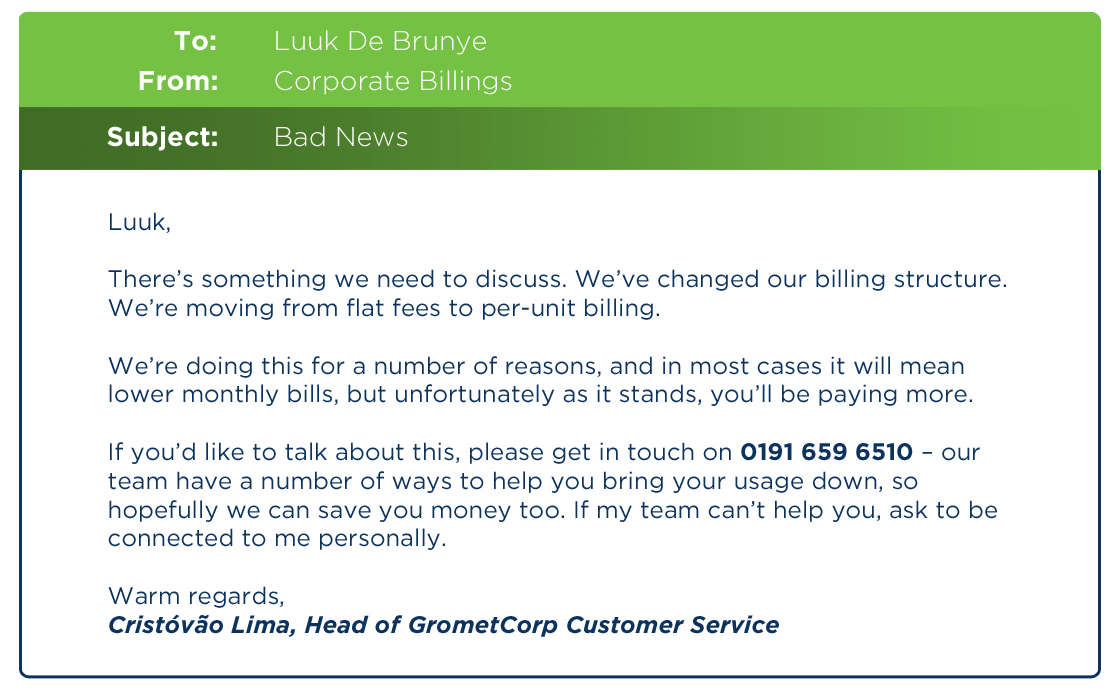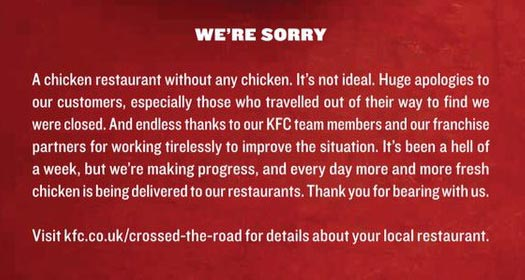People don’t always remember what we say, but they never forget how we make them feel – and that’s where tone of voice comes in.
Here Guy Letts shares five tips with us, which can easily be implemented in your business!
Some great communicators are born that way. Most of us have to work at it.
But it’s worth it.
Words are powerful. Used well, they can move us, inspire us, motivate us to action. Used poorly, they can make us lose hope.
The very best customer service can be undermined by the wrong tone of voice. Yet the worst complaint can be defused and fixed if you get it right.
If you want to get honest feedback from your customers, they need to trust that you’re listening. Tone of voice makes a huge difference to that. And if you want to want to improve your Net Promoter Score (NPS) score, it turns out that tone of voice can make a huge difference to that too.
So it’s worth getting right…
1. Do Speak and Write Naturally
The best advice I learnt from a professional speech writer was to write, speak or present using only the language that you’d naturally use if talking to a friend over a coffee.
So, when communicating with our customers, they’re going to enjoy doing business with us more if we put them at ease by keeping the tone simple and informal, whether we’re speaking or writing.
And when speaking, it’s not just the words, but also the rhythm, speed, volume and pitch.
For example, I remember sitting through the safety briefing of a US airline and the member of cabin crew who delivered it seemed to be going for a speed record. I could barely make out the words, and although I’m sure she intended to promote safety, she was just going through the motions and it felt like it.
So instead of…
Felicitations!
Our continuing gratitude for your patronage. Please ensure that should any aspect of the services we render cause disgruntlement in yourself you touch base with us promptly.
Your account is now due for settlement. We implore you to carefully scrutinise the data herein to ensure no errors or omissions have occurred on our part, before enclosing your remittance with alacrity.
Yours most fondly, The Enterprise Energy Billing Team
Perhaps try…
Good morning,
Your monthly bill is now due. We hope everything has been OK, but if not, please get in touch – we care about putting things right for you.
Please check that everything in your attached statement is correct before making payment via bank transfer.
Thanks again, Chris Thorpe, Enterprise Energy Billing
The problem comes when we adopt a vocabulary that’s not one we’d naturally use. It can make you at best hard to understand, and at worst it can make you sound insincere.
So when you’re speaking or writing, for best results use the ‘as if to a friend’ test.
2. Don’t Be Defensive
Have you ever called a customer contact team to try and get a problem fixed, only to find the person who takes the call starts with the assumption that their company has done nothing wrong and the fault must be yours?
It’s frustrating. No doubt the call handler is acting with good intentions, trying to protect the interests of their company. But whatever the problem was, this approach immediately makes it worse.
The person calling is already stressed because there’s a problem. Now they have to deal with someone who isn’t receptive.
Whose fault it is does not matter at this stage. The best thing to do in this situation is for the call handler to start by saying, “sorry“.
It’s important for everyone to understand you’re not conceding blame or liability. You’re just saying you feel sad that your customer has experienced a problem and reassuring them that you will try to help.
Saying “sorry” is an expression of sympathy, not an admission of guilt.
Nobody can sue you for saying sorry. If you watch a police drama on TV, and the detective says “I am sorry for your loss” to the relatives of a victim, they are not confessing to the murder. They are simply expressing sympathy, and mourning the fact that a bad thing has happened.
To get the best outcome for both your organisation and the customer, you need to build rapport and help the customer understand that you have their best interests at heart. Saying ‘sorry’ when you need to is a great way to start.
3. Don’t Be Anonymous
We feel better when people step up and take responsibility.
Even if it’s bad news like a price increase, we feel more respect for someone who’s prepared to take accountability for a decision, explain it and stand behind it than we do for “The Marketing Team” or “The Customer Service Team”.
But I get it – if you’re the leader, you’re worried that you’ll get a deluge of phone calls.
Well, to be honest, if you’re doing something that’s unfair, or if you’re not communicating it well, then you deserve those calls. You need to learn those lessons. But whether it’s an email to a single customer or a newsletter to everyone, it helps your brand if customers know that there’s a person they can identify with, rather than a faceless company.
In my last role, running customer service at a large software firm, I always used to put my name at the bottom of customer communications or encourage one of my team to do that if it was something specific to their area. I was nervous at first but by the end I was confident enough that sometimes I’d even include my mobile phone number.
The amazing thing?
I only ever received a couple of calls. All the others went through the normal channels – the teams that were geared up to handling the everyday issues.
And I’m very glad that I did receive those personal calls, because they were from high-value customers. Things had gone badly wrong for them – the normal procedures for solving customer problems had failed and they were hanging on by a thread.
I was glad of the chance to save them, even though it wasn’t comfortable to hear the bad news at the time. At least we could resolve it and keep their business.
Of course you couldn’t handle it if every customer rang you directly. (They won’t.)
But as the leader, you should have teams and systems in place who can handle those calls. Managers who can deal with escalations. Procedures for planning when communications will go out and making sure you have capacity for the response. And contingency plans for how you will cope if something goes wrong.
It’s your job to build a machine that makes and keeps customers happy. If you do that you’ll find that the vast majority of customers will use efficient contact channels that are set up for them, rather than try and hunt down an executive who is probably in a meeting.
They will not try to call you directly unless something has gone badly wrong – not least (in my case anyway) because they will presume you do not know how to use your company’s IT systems. If they do contact you, it will be as a last resort.
So instead of…

Perhaps try…

And, if you have the bad luck to hear from one of that small minority of customers who are not reasonable and rational (less than 1% in my experience), then you are the one who has the authority, experience and judgement to encourage them to become a customer of one of your competitors instead.
So don’t hide behind a title or a team name. Take the lead! One way or another, it will end well.
4. Don’t Mangle the Grammar
When we’re speaking to one another, we say “you” and “me”.
But when I’m a customer I sometimes hear the words ‘yourself’ and ‘myself’ instead. “I will send the documents to yourself.”
On the positive side, I think people do this because they’re trying to be polite and respectful, and I applaud the sentiment.
Unfortunately, not only does it sound unusual (because it’s not everyday language), it’s also grammatically wrong.
By all means I want to go to great lengths to be polite to my customers. But I’ve learnt that rather than flowery language they value clarity, honesty and delivering on my promises.
5. Don’t Use Platitudes
When I started my career in industry (around the time that fax machines were becoming popular), telephones in big companies were answered with “Your call is important to us.”
I wasn’t convinced at the time, but 30 years on I still hear the same phrase, spoken now (as it was then) by a recorded voice. It’s just that now it’s a computer, not a tape.
I can’t help feeling that if my call was really ‘important’, they would have a person speak to me rather than a machine telling me to wait. It would be more useful if I was told how long I would have to wait or to be told the times when waiting is less likely.
Otherwise it devalues the word ‘important’.
Clearly I am old and, according to my teenage son, prone to grumpiness.
However, words should have meaning. They can be a force for good in your business, or they can irritate your customers and make you appear insincere.
So unless you really, truly mean them, and can deliver a reality to match, don’t use phrases like:
- “We are committed to…”
- “…valued customer…”
- “For your convenience…”
Because your customers have heard them before, and have learned that when they hear them, the business using them doesn’t mean what they’re saying. At best, you’re being forgettable. At worst, you’re further annoying an irate customer.
Global chicken-frying franchise, KFC recently had huge problems getting chicken delivered to their UK restaurants. No chicken is bad news for a chicken restaurant, and hundreds of outlets were forced to close.
KFC did a great job apologising for this turn of events. Here’s the advert they took out in the national press. Notice how they apologise for what’s happened without resorting to any lazy platitudes like “valued customers”:

Remember to always try to be creative, use phrases that are original, genuine and fresh, and actually mean something to your customers.

Guy Letts
Last time I travelled by train the notice by the power outlet wasn’t stiff and starchy. It said “Feel free to charge your phone and your laptop, but no toasters or kettles, please.” It made its point, but it felt a lot more human, and it made this grumpy man smile.
Good luck working on your tone of voice – it can be an effort to stop using the clichés and phrases that you’ve came to rely on, but it’s well worth the rewards that come when you begin to develop a two-way relationship with your customers.
To find out more about CustomerSure, visit: www.customersure.com
Author: Guest Author
Published On: 23rd Mar 2018 - Last modified: 24th Jan 2025
Read more about - Skills, CustomerSure, Guy Letts, Soft Skills



































